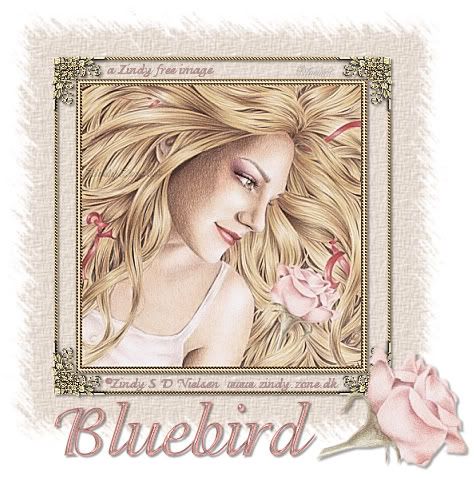
YOU WILL NEED:
* Paint Shop Pro. I used version 10 but you should be able to make this tag in earlier versions.
* Tube of choice. I am using the artwork of Zindy S D Nielsen and you can check out her art at her site http://zindy.zone.dk/index.php
* Corner tube of choice.
* Accent tube of choice.
* Mask of choice. I am using Saphire1.
* Font of choice.
* Super Blade Pro with Coconut Ice preset or another filter of choice to use on your text.
* Gold bead pattern tile (right click and save)

* You can download my supplies HERE. Included are the tubes used in this tutorial, the gold bead pattern, the mask and the corner tube.
LETS START!
1. Open your tubes, mask and pattern in PSP. Open your font (by double clicking on it in Windows Explorer) and minimise to use later.
2. Open a new image 500 x 500 with a white background.
3. Add a new raster layer and floodfill with a light colour from your tube. I used #e7dcd2.
4. Apply the mask to the coloured raster layer (Layers - New mask layer - From image). Merge group. Apply PSP Texture (Effects - Texture Effects - Texture) at the following settings.

5. Copy and paste your main tube and resize it to 75%. If you are using a different tube you will want your mask showing around the edges.
6. Copy and paste your corner tube as a new layer. Position your corner tube so that the inner part of the corner tube just touches the corner of the picture tube.

7. When you have your corner in position, duplicate and mirror. Adjust the position of the mirrored layer if necessary (it should be touching the corner of the other side now) and merge the layers. Duplicate the merged layer and flip. Adjust the position of the flipped layer if necessary then merge your layers again.
8. Put your gold bead pattern on the materials palette (click on the pattern box and scroll up - anything open in PSP will show up at the top of the list and you just click on the image you want to use as a pattern).
9. Activate your main tube layer. Selection - Select all - Float - Defloat. Add a new raster layer and fill the selection with your gold bead pattern. Selection - Modify - Contract by 3. Press the delete key and fill the selection with the light colour you used for your mask layer. Selection - Modify - Contract by 2 and fill with the gold bead pattern. Selection - Modify - Contract by 3 and press the delete key. Select none.
10. Activate your preset shapes tool. Ensure the gold bead pattern is set as the foreground and the background turned off. Draw a rectangle using the following settings. Your rectangle should connect the outer edges of your corner tubes (see example at top). You can use your up and down and left and right arrows to help position your rectangle. When you are satisfied with the position of the rectangle, convert to a raster layer.

11. Ensure that your layers are in the correct order from the top down -

12. Close off the white background layer and the coloured mask layer. Make sure one of the other layers is activated and merge visible. Adjust - Sharpen - Unsharp mask at the following settings.

13. Add drop shadow at the following settings (colour is black).

14. You can resize your mask layer if you want less of it showing. You can play with the layer opacity to lighten the mask as well. I resized mine to 90%.
15. Add your accent tube where you would like it. I used the rose accent from the Zindy tube and did a free rotate at 90 degrees to the right and placed the tube at the bottom of the canvas. Apply the same drop shadow to the accent tube.
16. Select two colours from your tube to use as your text colours. I used #ae6968 for the foreground and #d8a6a1 as the background. Add your text at the following settings.

17. Apply whatever filter you would like to decorate your text with. I applied Super Blade Pro with the M-Coconut Ice preset. Add the same drop shadow as before.
18. Add copyright information and your watermark.
19. Crop your canvas to reduce some of the white space around it. Save as a .jpg file and you are done. I hope you enjoyed this tutorial.


















































No comments:
Post a Comment